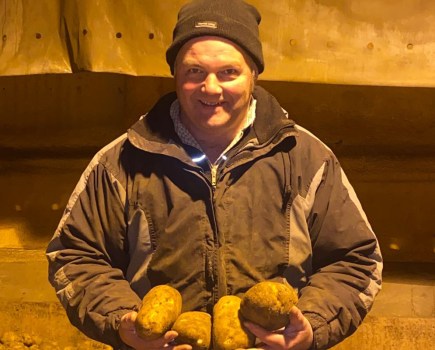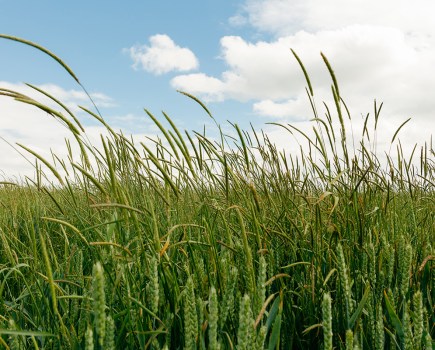
By Martin Lines
Navigating the pressures of the marketplace and changes to BPS payments can make farming a very lonely place and getting out to events and shows really makes a difference to how I feel. This year’s Groundswell was a tonic after months of online meetings.
It didn’t disappoint in how it brought people together from across the UK (and beyond) to share, discuss and celebrate all things regenerative farming. This made for a welcomed reprieve from the narratives online, where short soundbites leave much to be desired in how we share the realities of the daily decisions farmers make.
Right now, there are calls within the wider industry to increase food production to feed a growing world population, pay farmers more to address global supply problems, and temporarily remove environmental areas to produce more cereals. Yet, much of what we produce isn’t food for people. Over 60% of the grain grown in the UK is for animal feed, and large areas of good quality soil are used for solar panels or energy crops.
We have a government that turns a blind eye to the global impact of our food imports, and our marketplace is ill-equipped to clearly market and label to indicate when produce is farmed to high environmental standards. The recent food strategy white paper fails to put any meat onto the bones of a vision for the future, pushing a half-baked wish list onto the plates of many hungry to see real change.
While the challenges of these past few years have exposed the vulnerabilities of the food system, it isn’t a direct consequence of the pandemic and the war in Ukraine, although this has massively exacerbated it. Extreme weather and a changing climate have brought numerous – and continued – threats to our supply chains.
Proposed quick fixes fail to resolve systemic issues and would weaken our adaptation to a warming world. Farming will face more brutal trials as our weather systems become more unpredictable. We need to move forward in how we work to improve natural processes across our farm landscapes, while growing and rearing more of what will meet society’s future needs – including nourishing people and our environment. Now is the time to take a closer look at what our soils can produce and how we can adopt new varieties in a move towards diverse systems.
As farmers grapple with this unique opportunity to deliver many solutions that tackle the unyielding challenges of our time, the prices farmers get for food are not enough when the environment and climate benefits far outweigh the return. We need the government and the private sector to put a real value on farming’s ability to return carbon to our soils and biodiversity to our ecosystems.
As my farm has been evolving over the past few years, I have been shouting about the benefits of integrating livestock to build soil health, fertility and biodiversity. Bringing livestock back to my farm after decades without them has been an unfolding lesson in the multiple rewards a well-managed flock or herd can bring. Fertiliser is better out of a bum than a bag, and now is as good a time as any to push the manure to the fore.
From farmers and scientists to conservationists, chefs and wholesalers, Groundswell was an energising space to hear from people across the food industry ask questions on how we can work together to find solutions to the problems that food and farming face. There is growing momentum in how organisations are coming together to galvanise positive change. Groundswell was a much-needed reminder that there are many of us working towards a future where nature recovery and climate mitigation are the rules and not the exception in producing sustainable and healthy food.
As the summer draws on and harvest gets into full swing, I want to remind anyone who might be struggling with the pressures of farming that there’s an adage that rings true: a problem shared is a problem halved. Please do reach out. Many others, including organisations, are there to support you and to listen. Farming can be lonely, but we can make it less so together.
This article was taken from the latest issue of CPM. For more articles like this, subscribe here.



